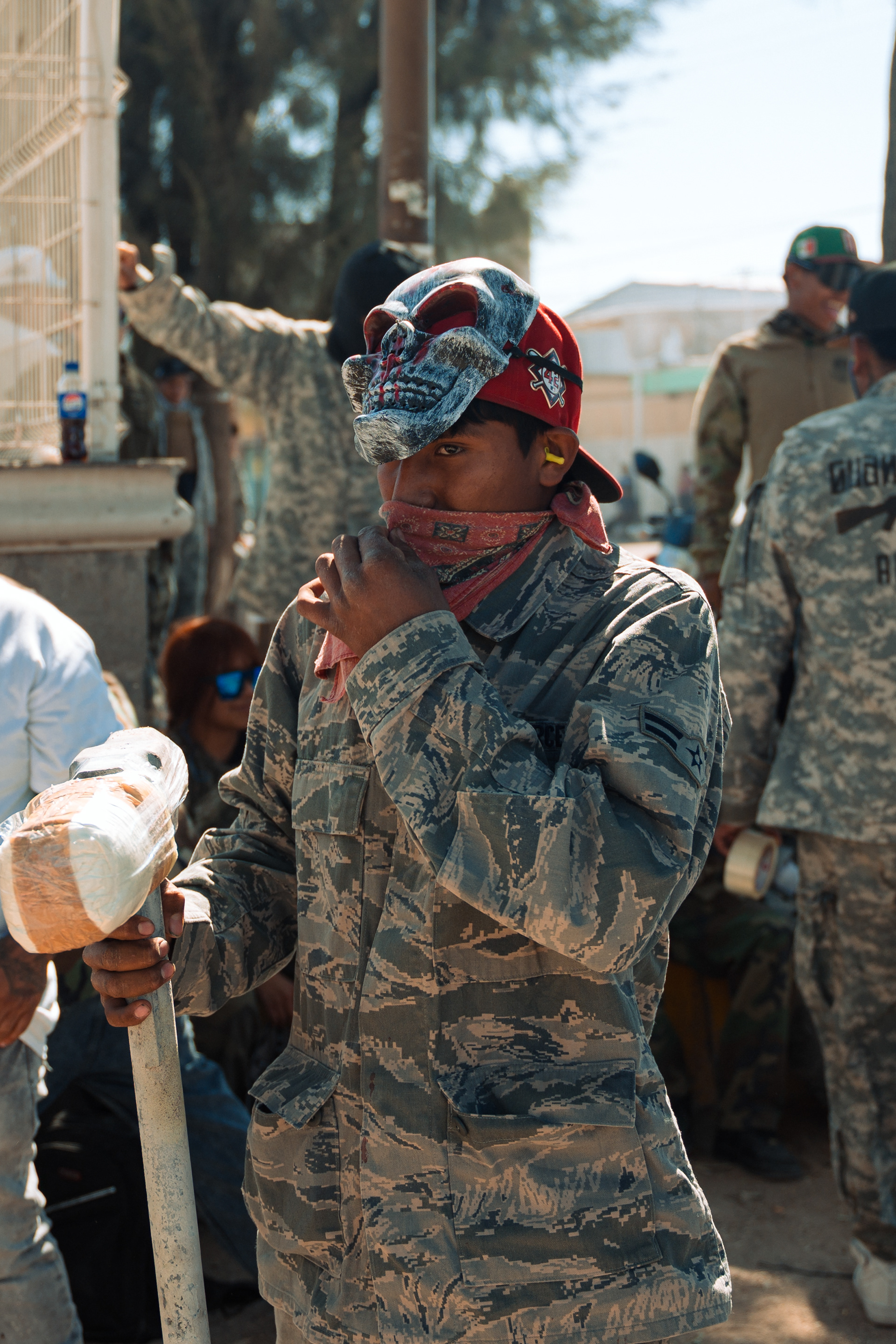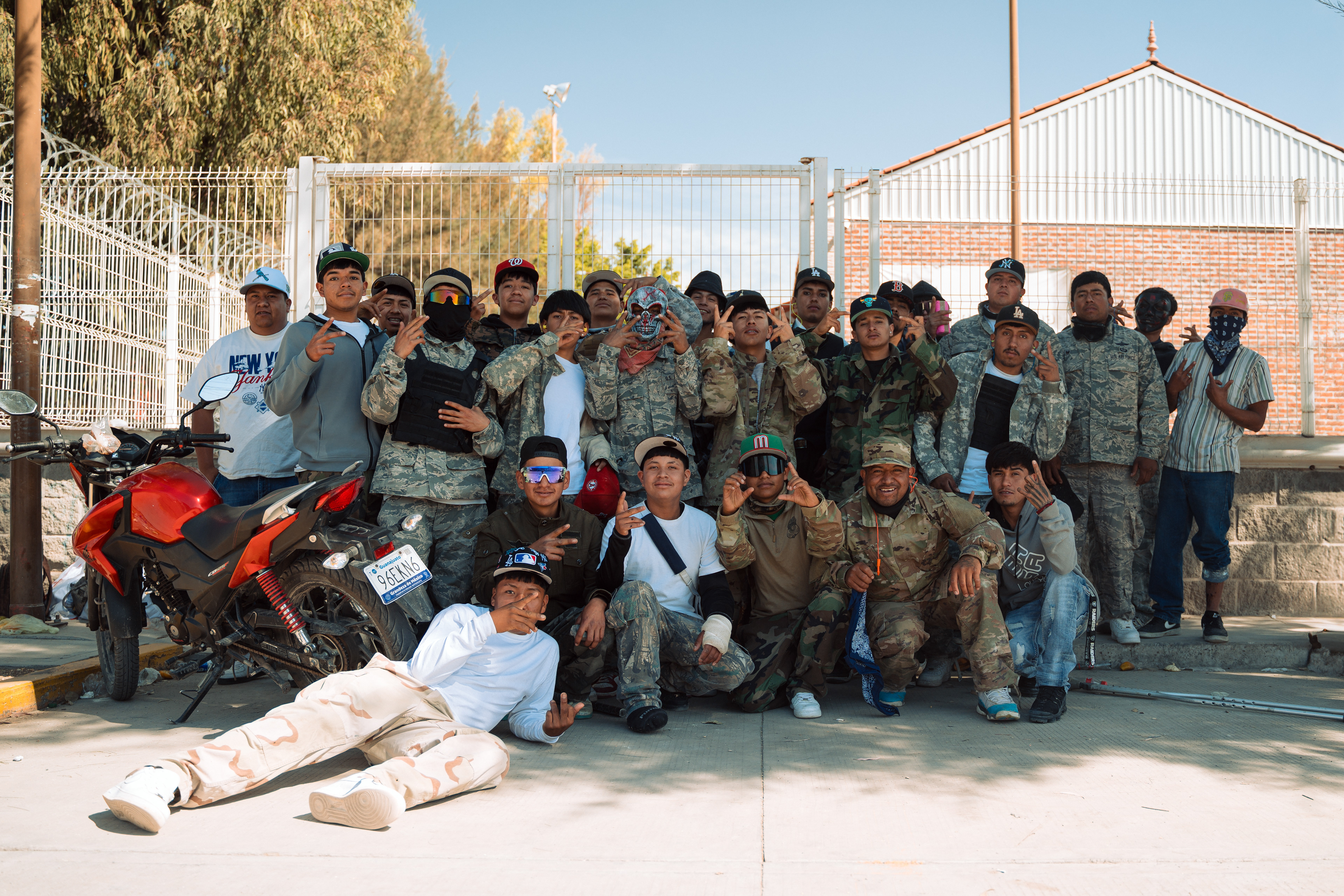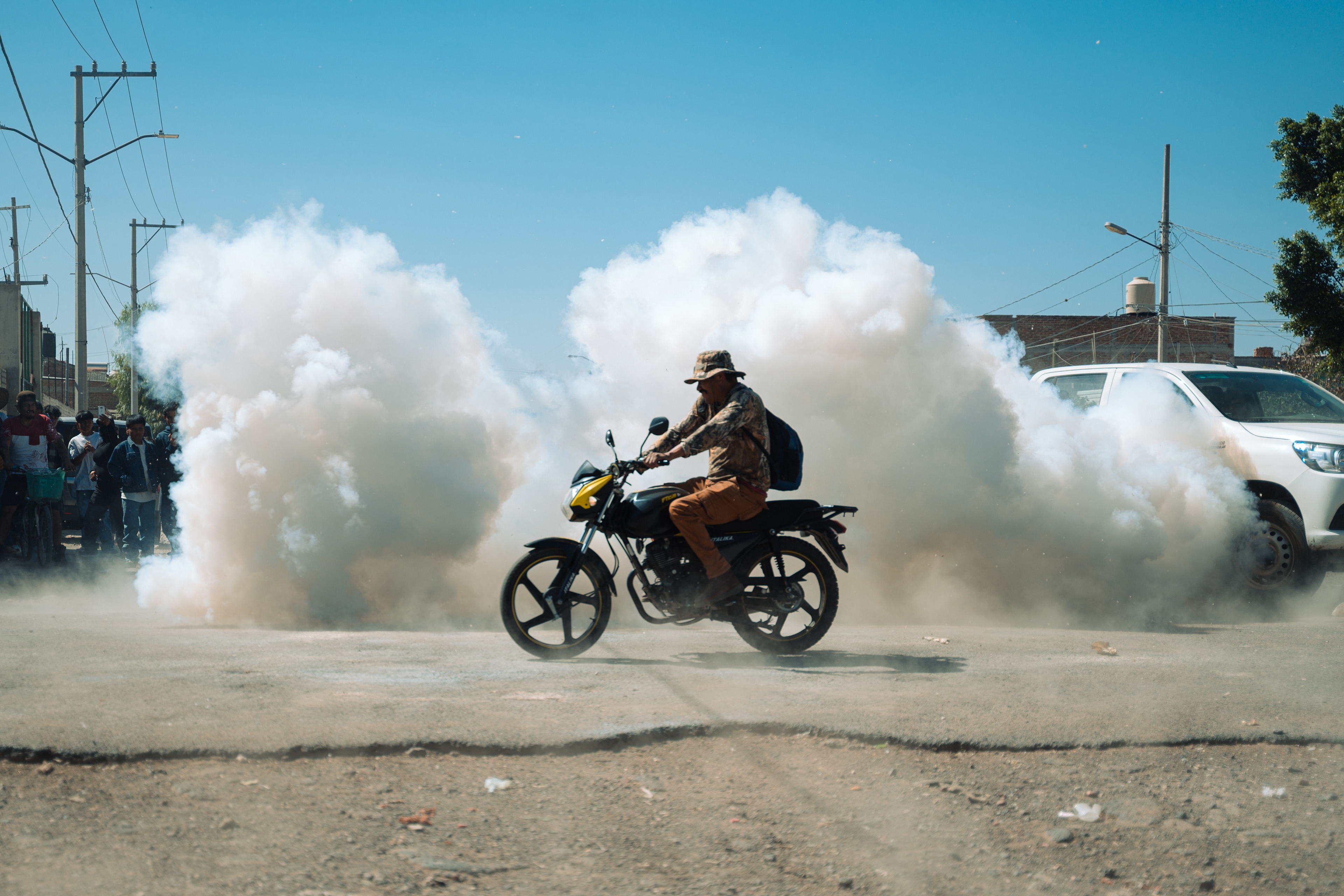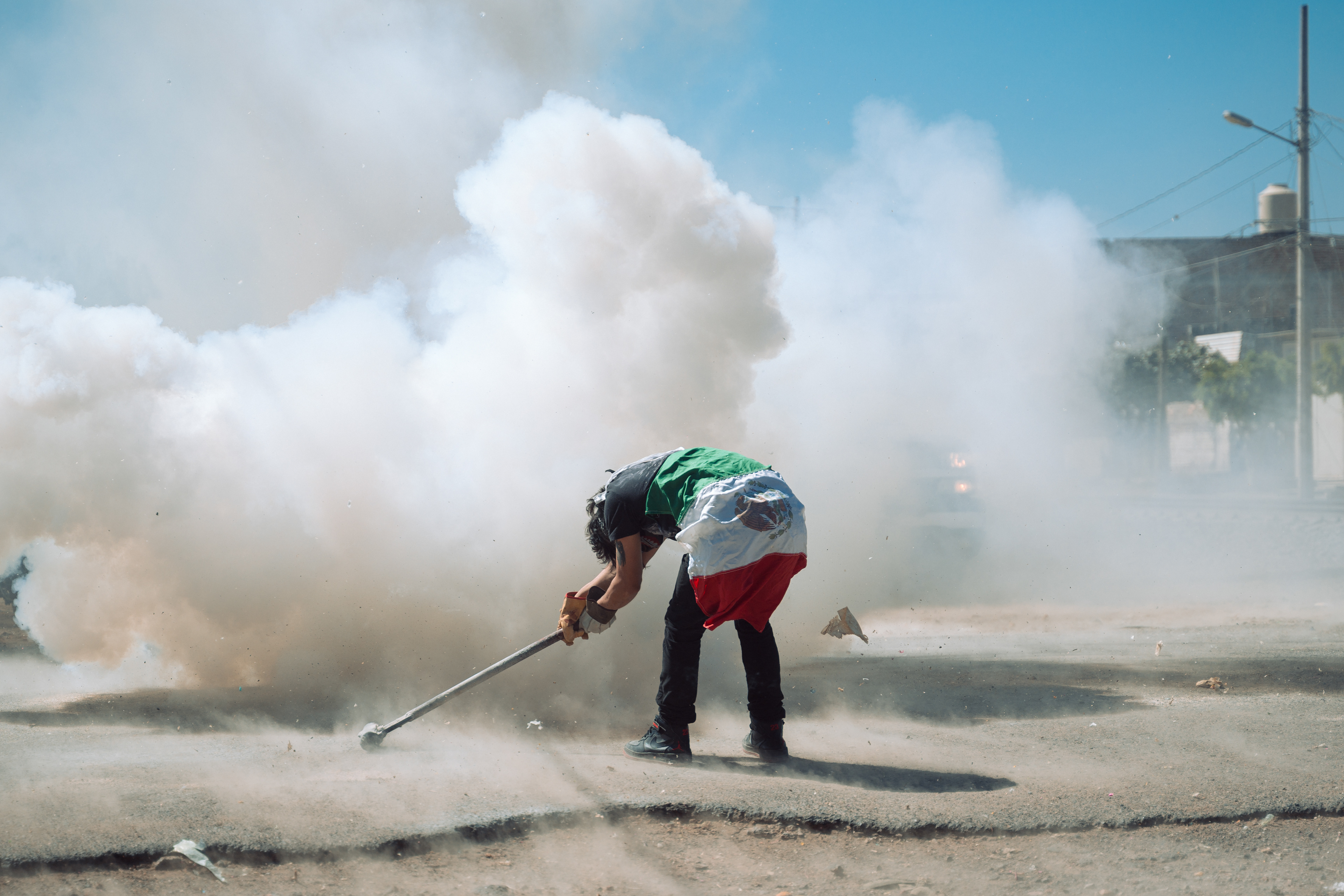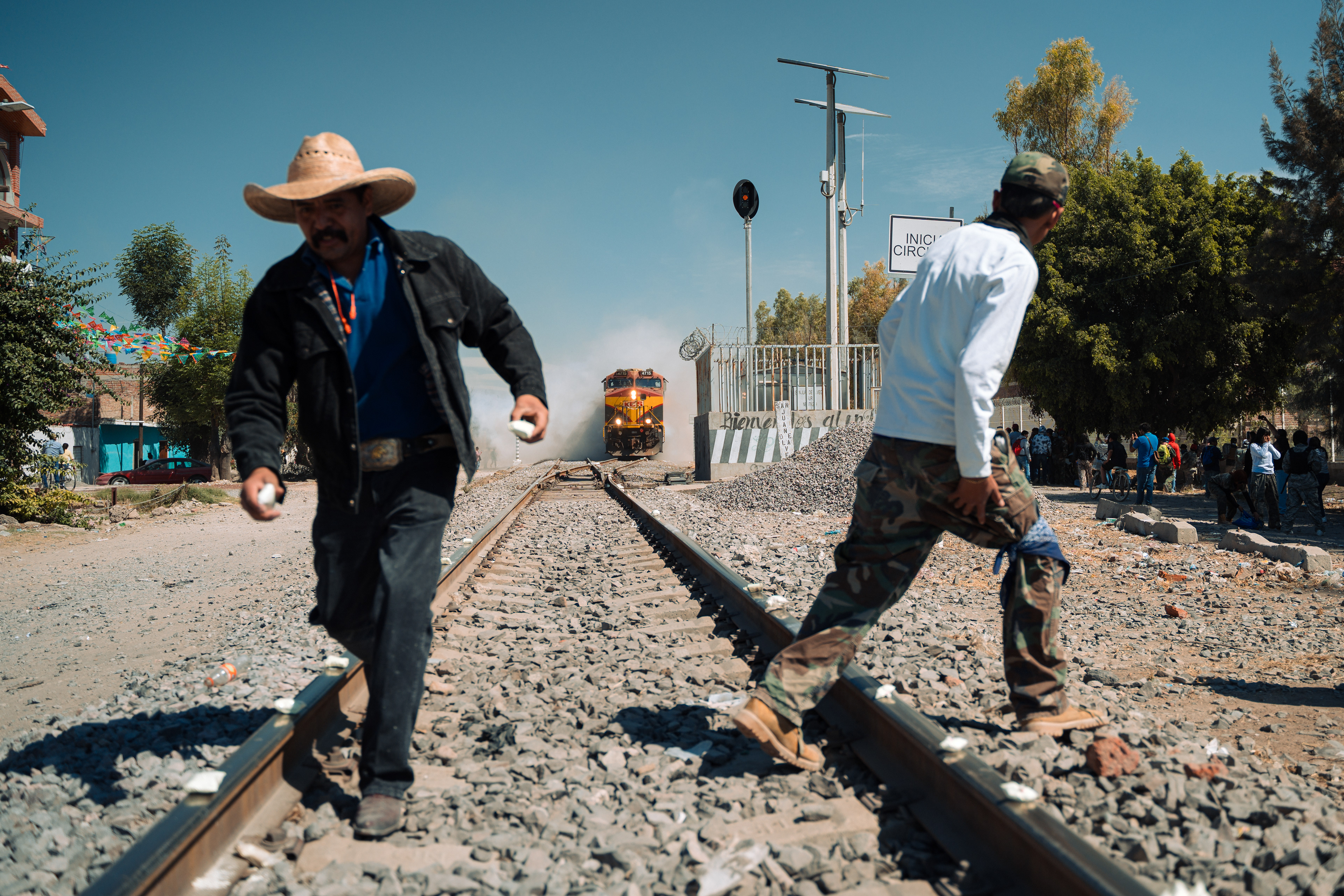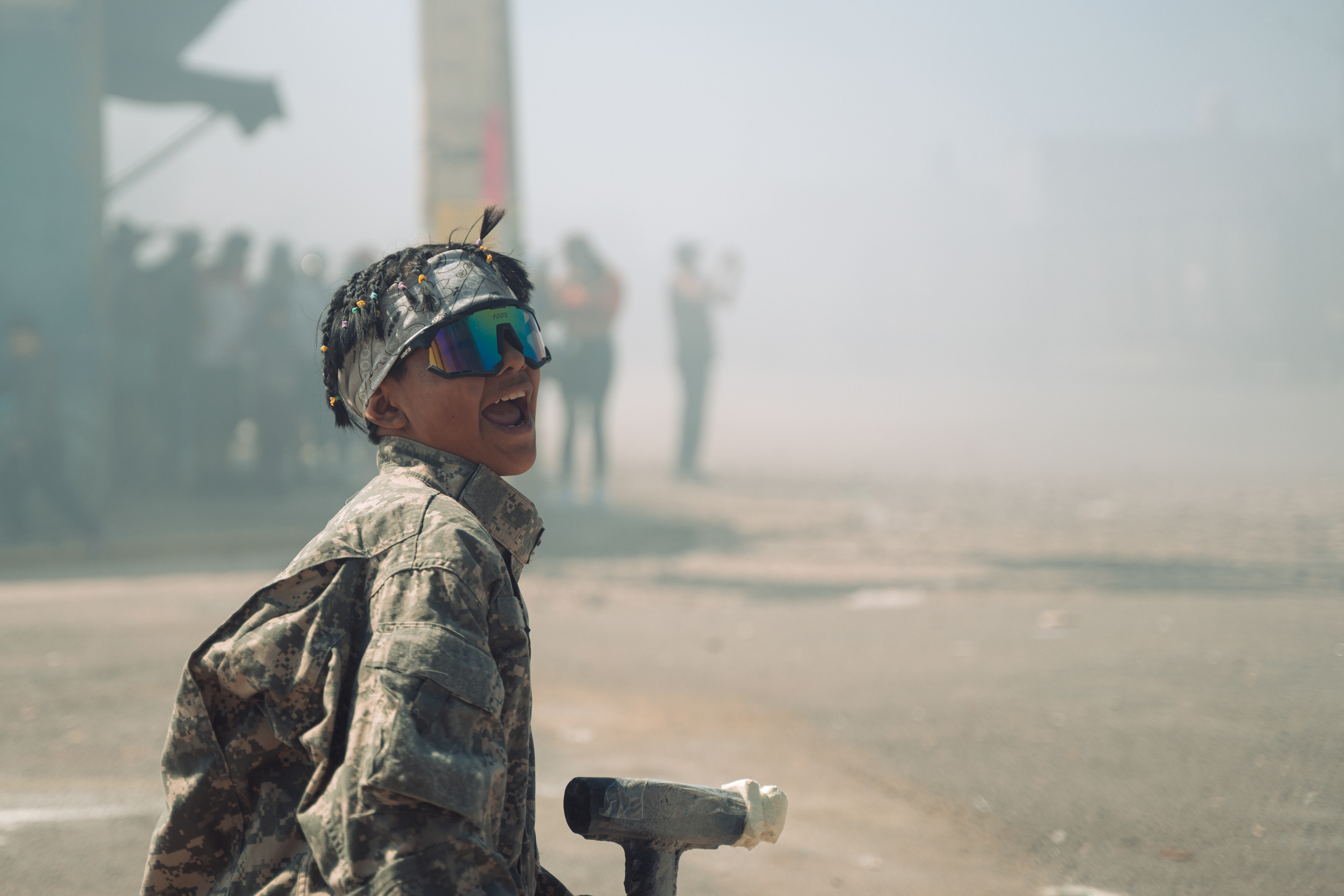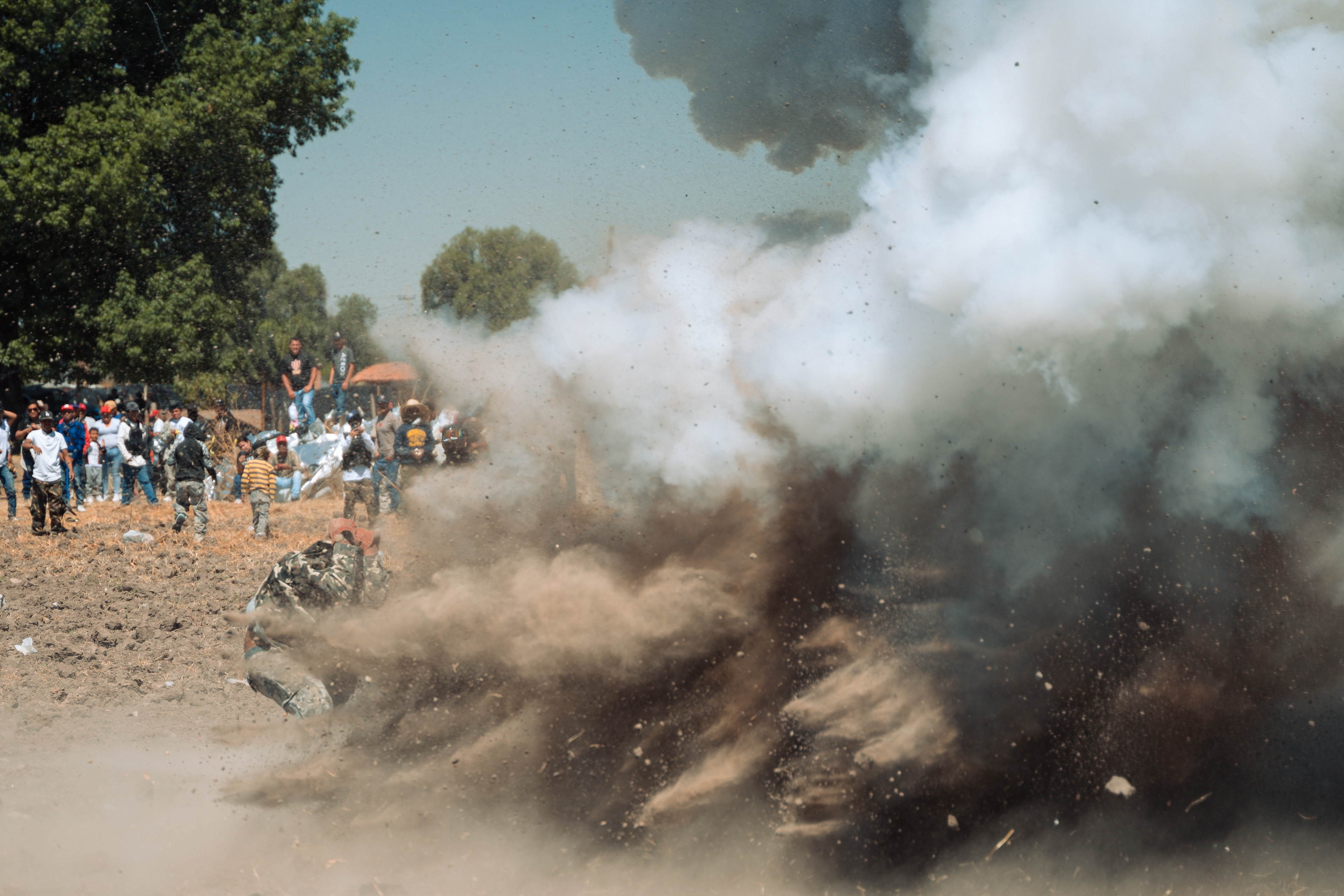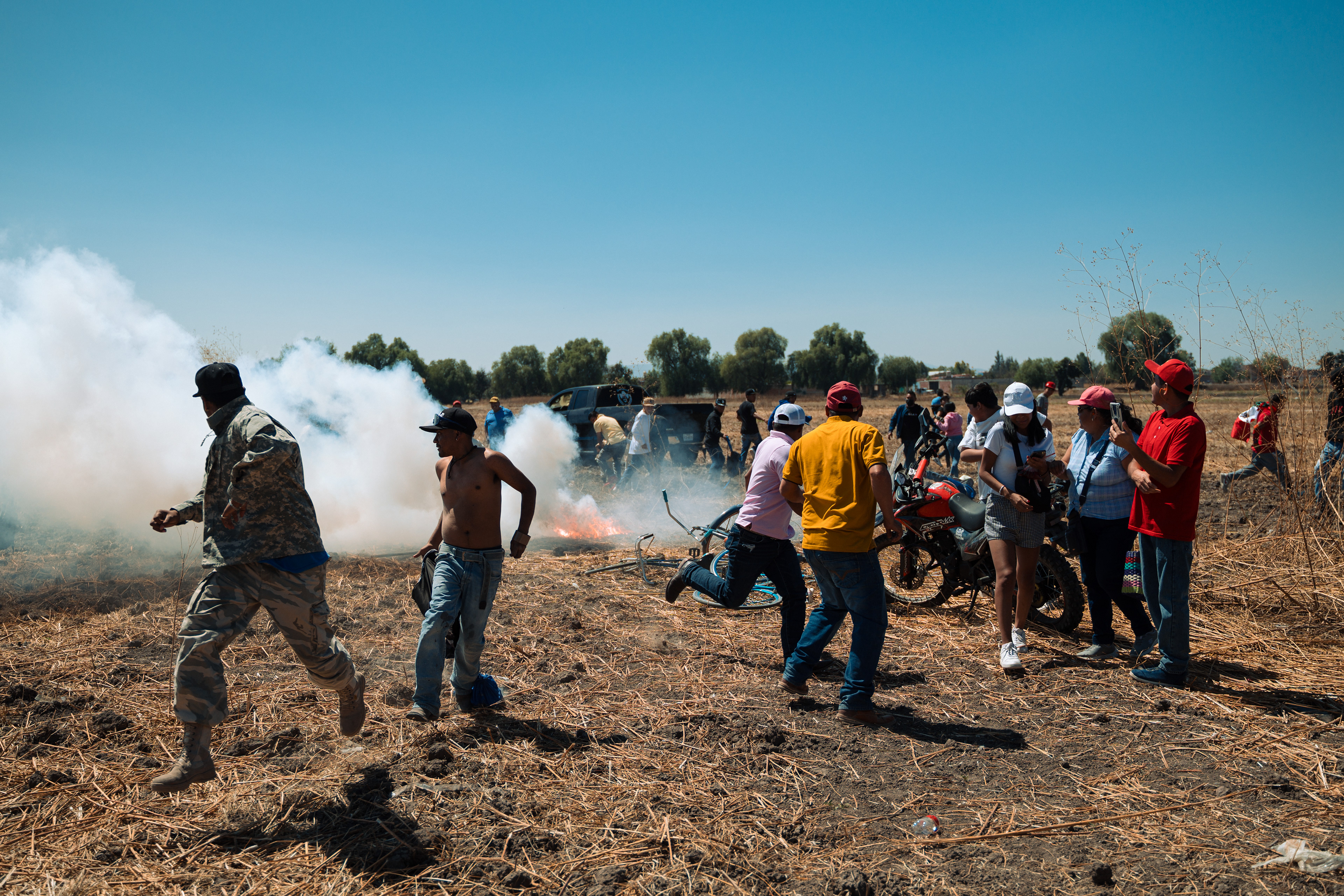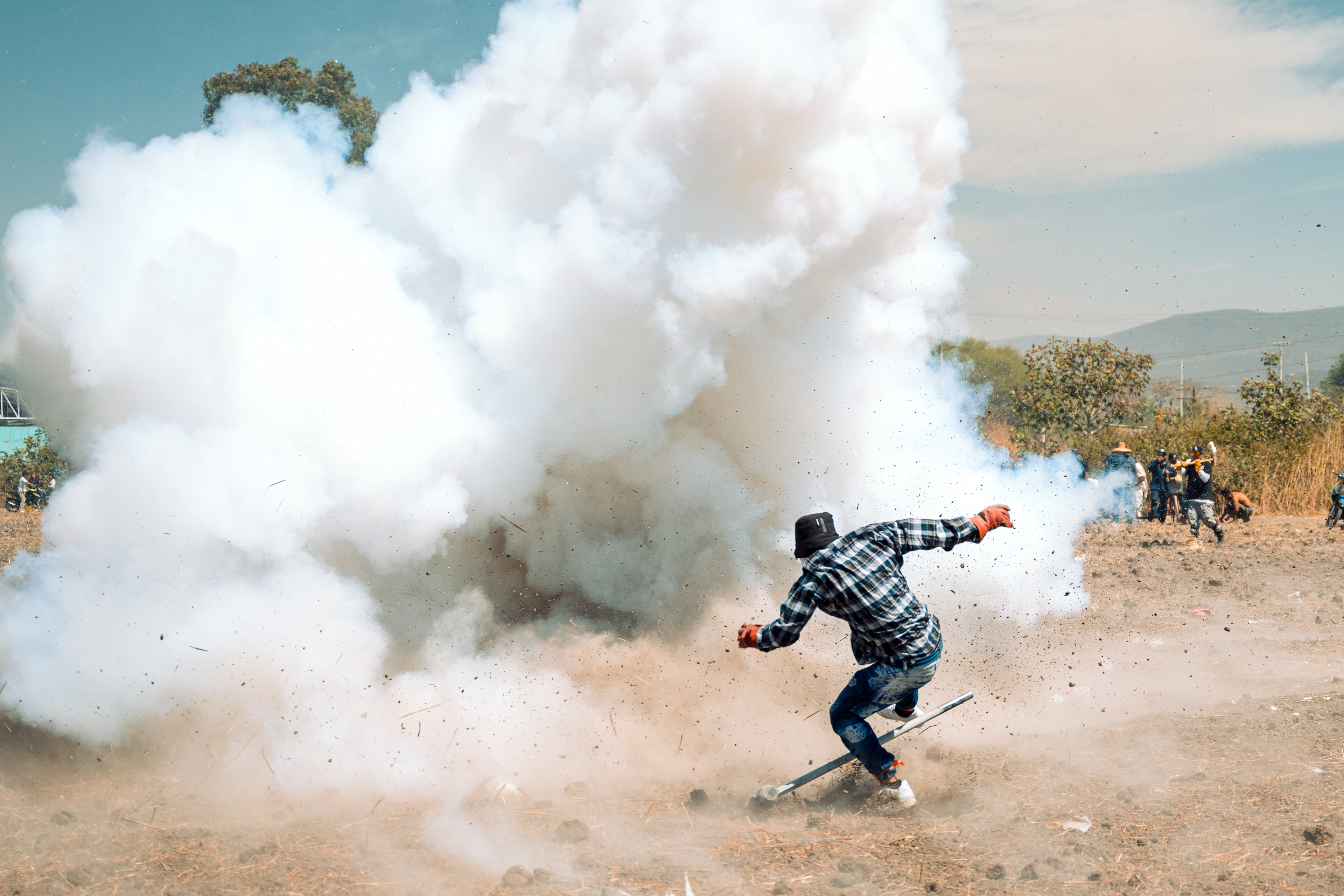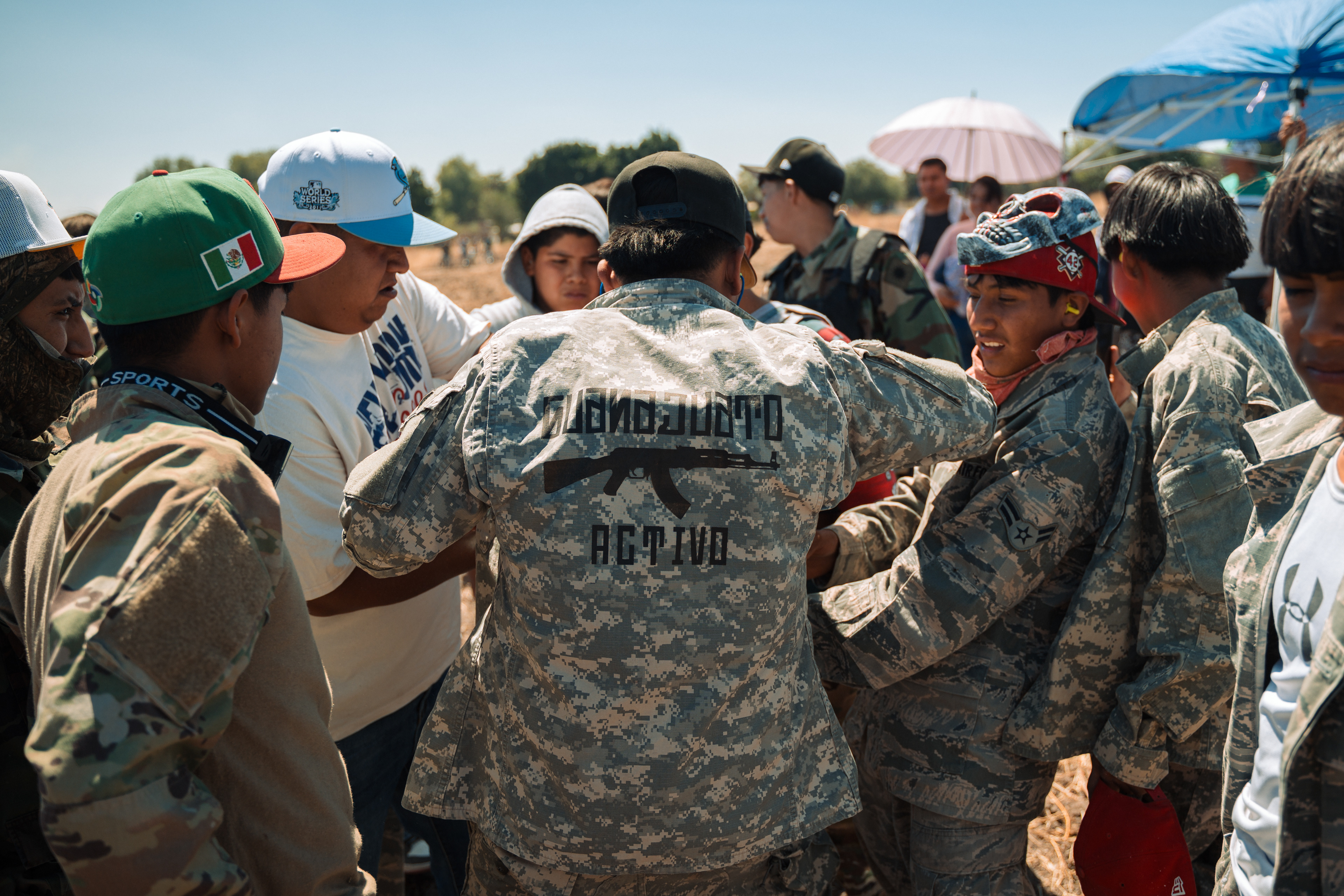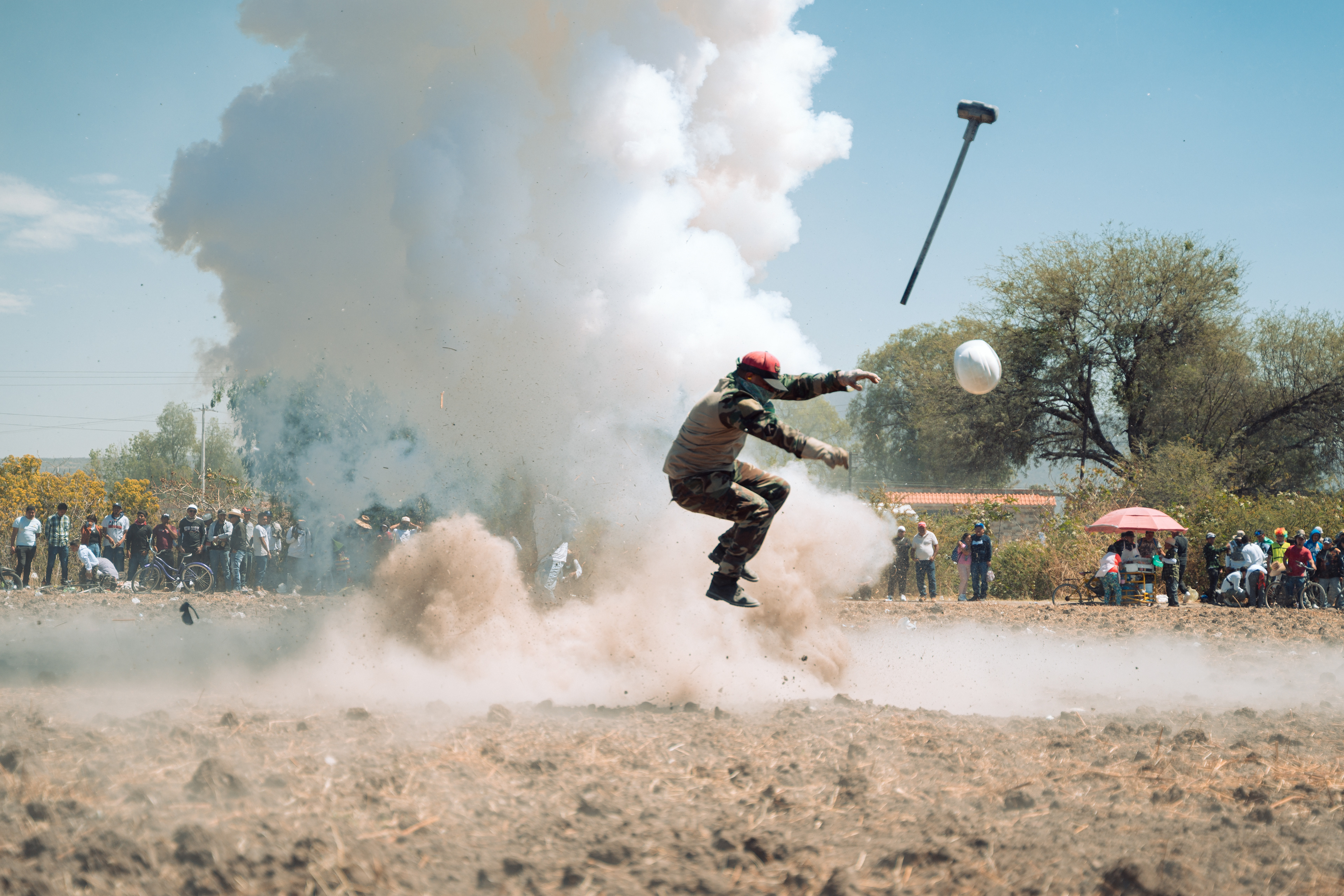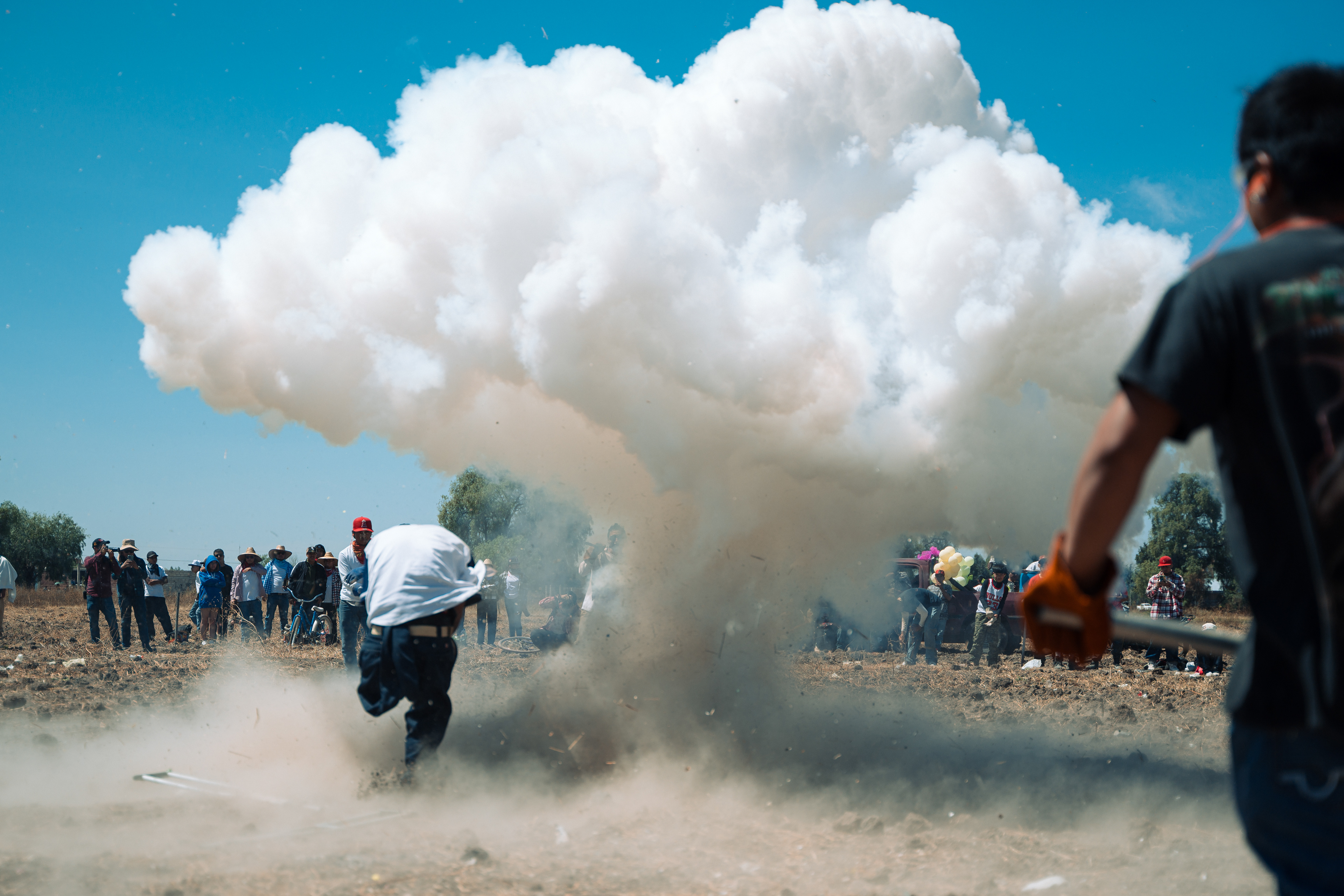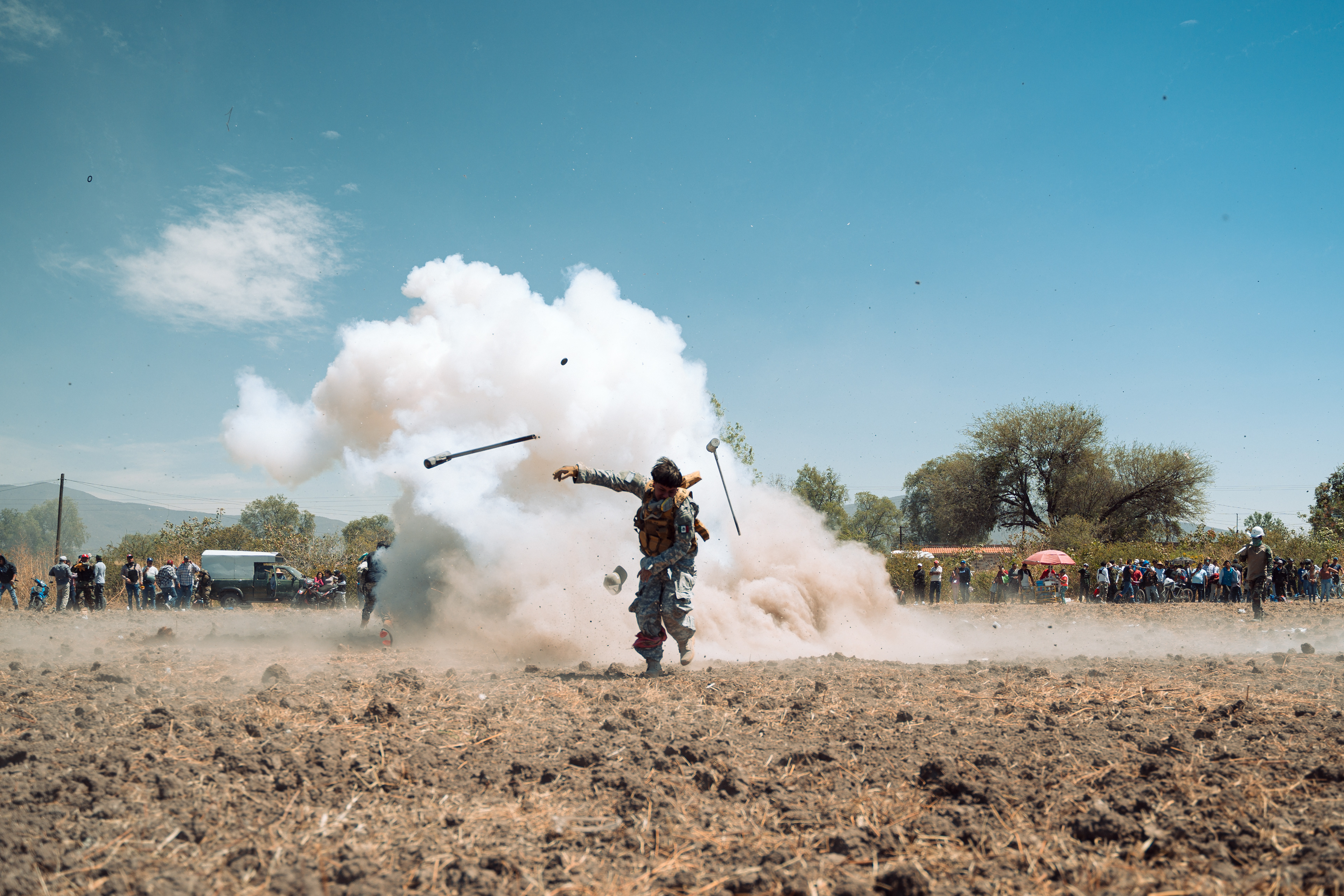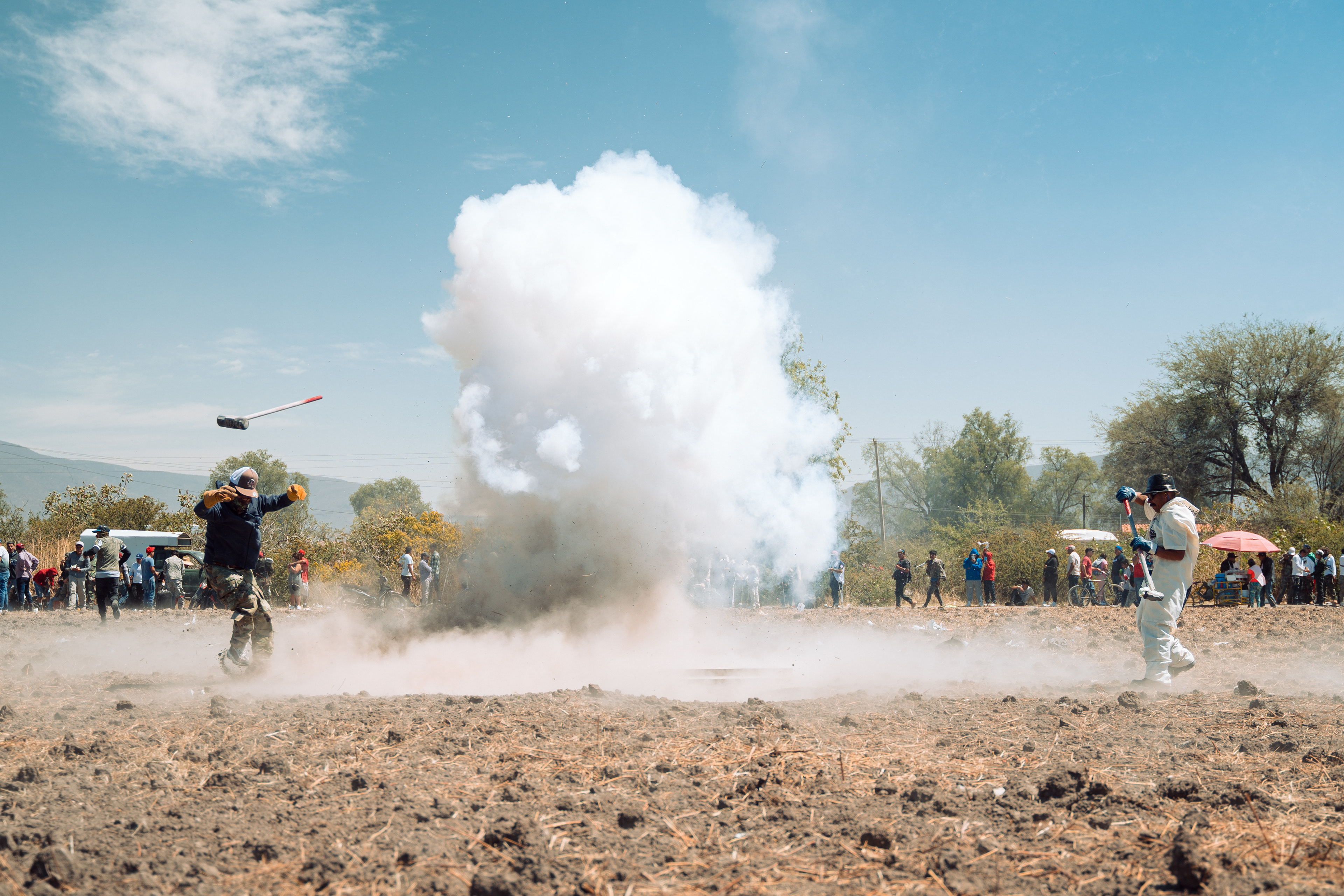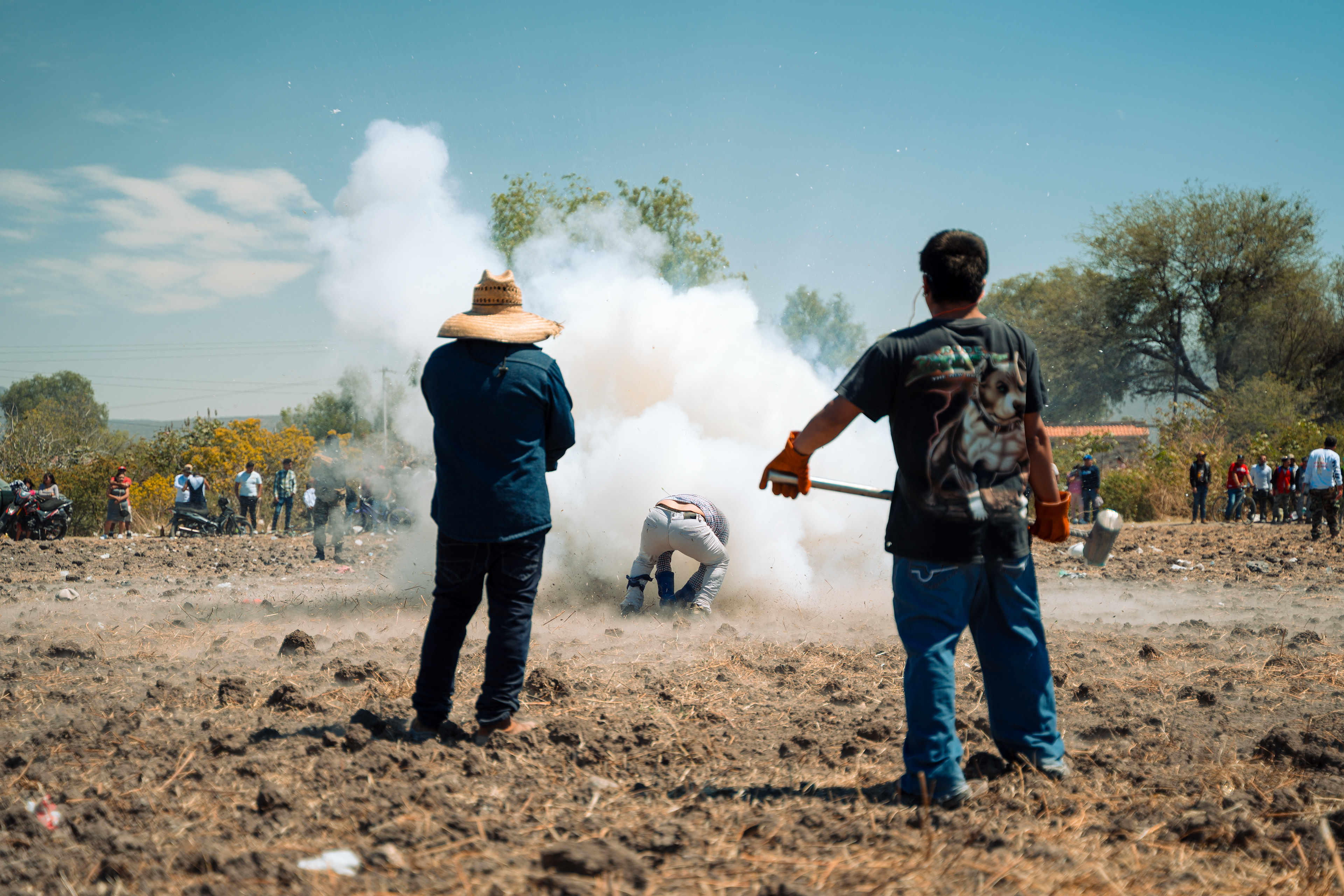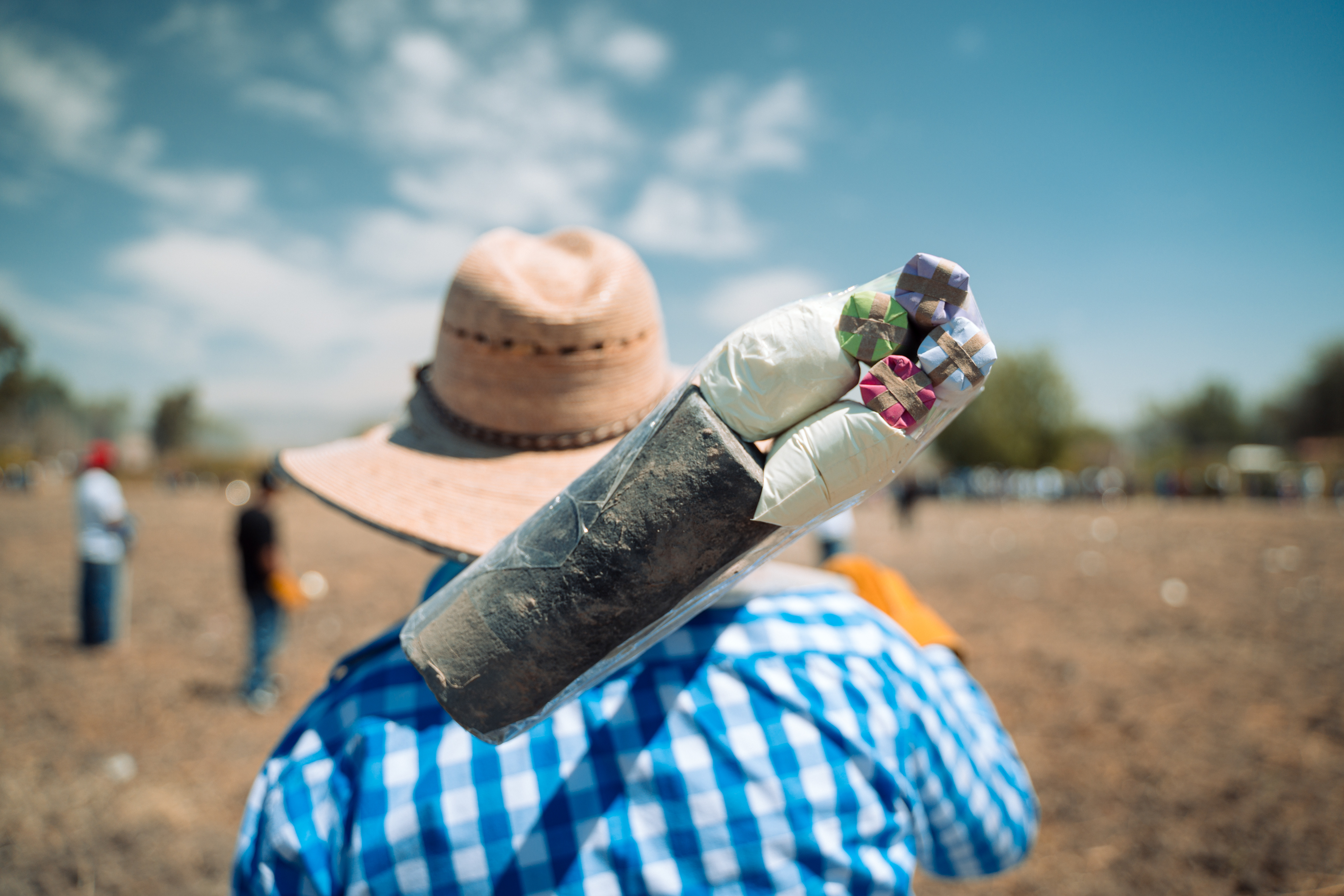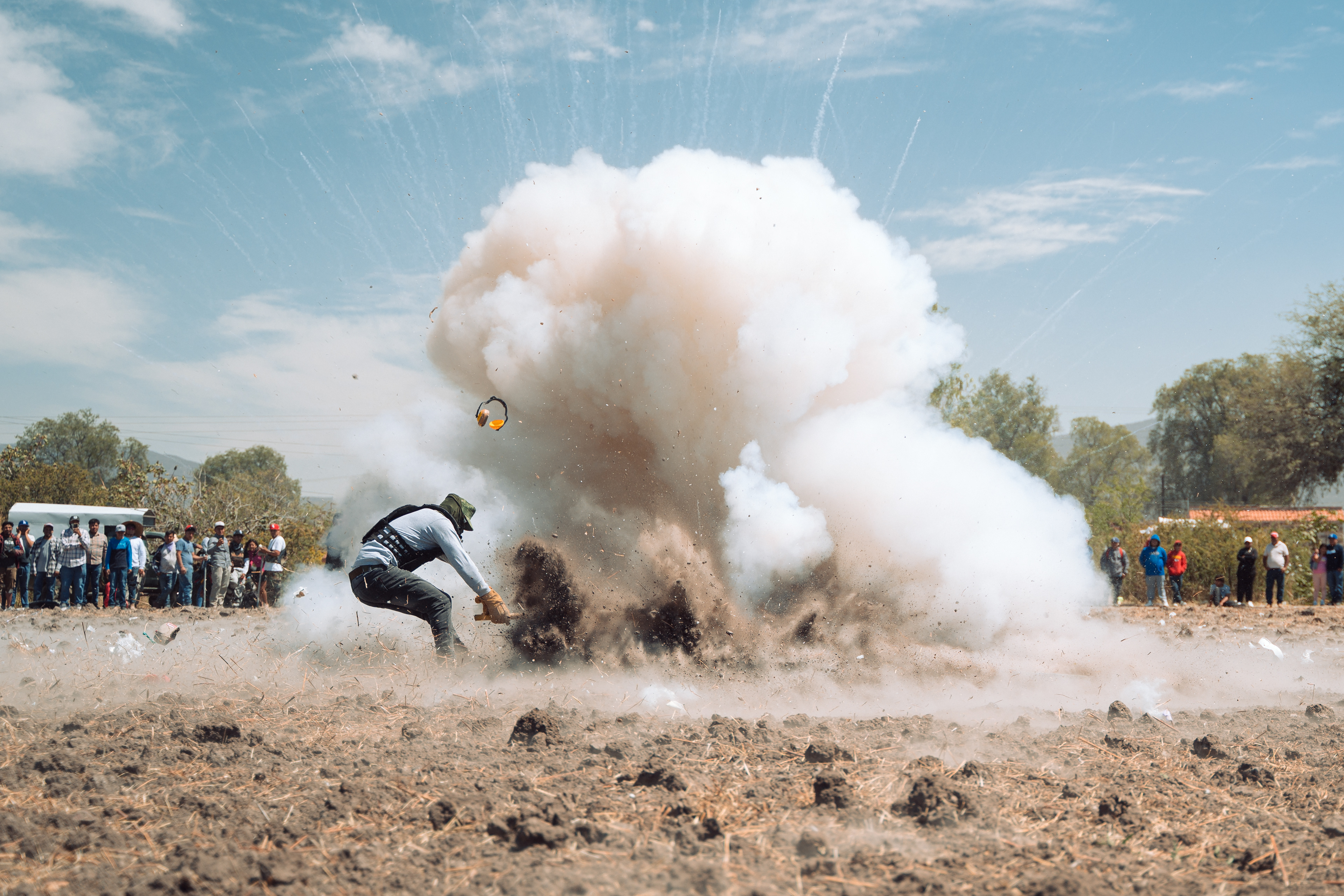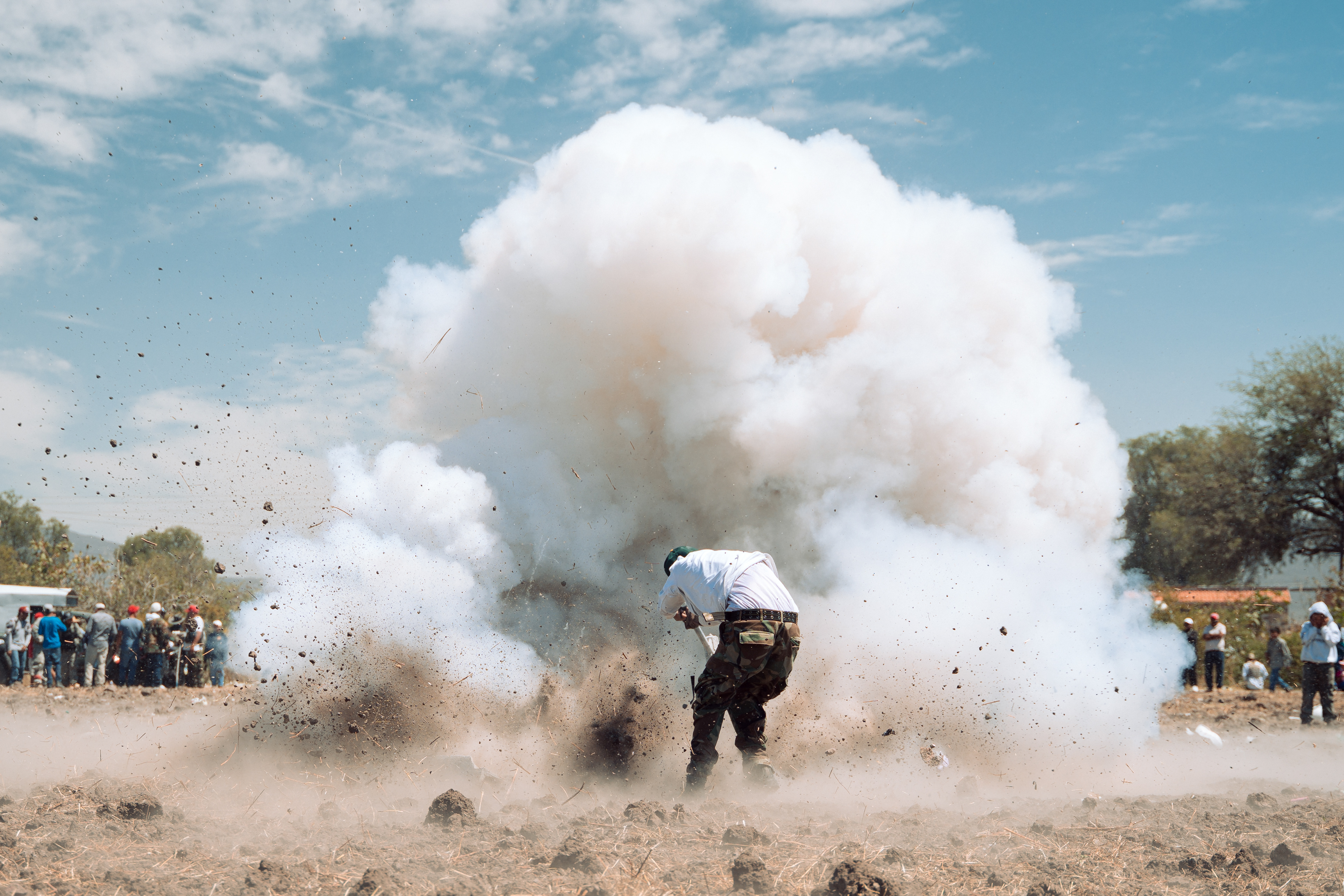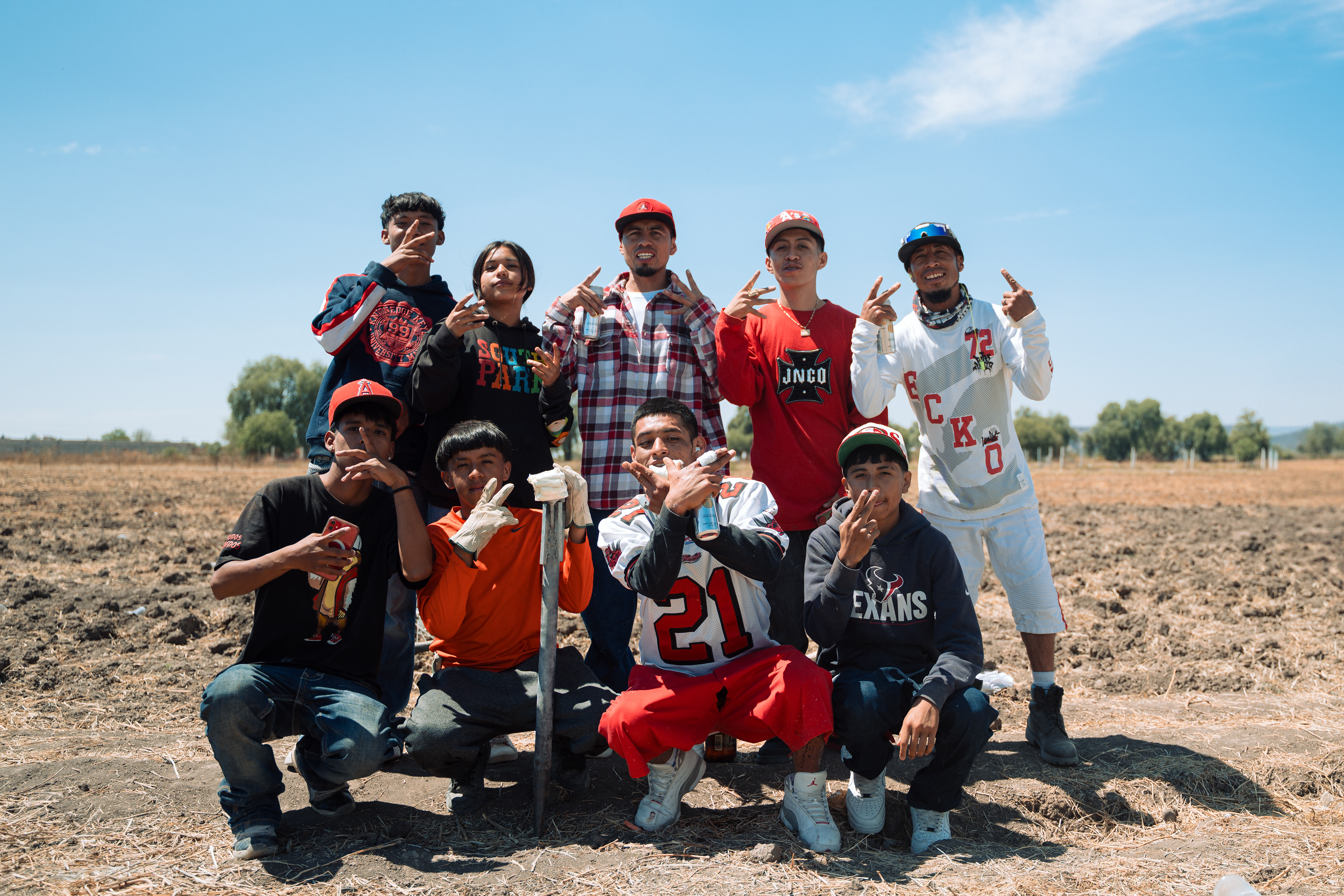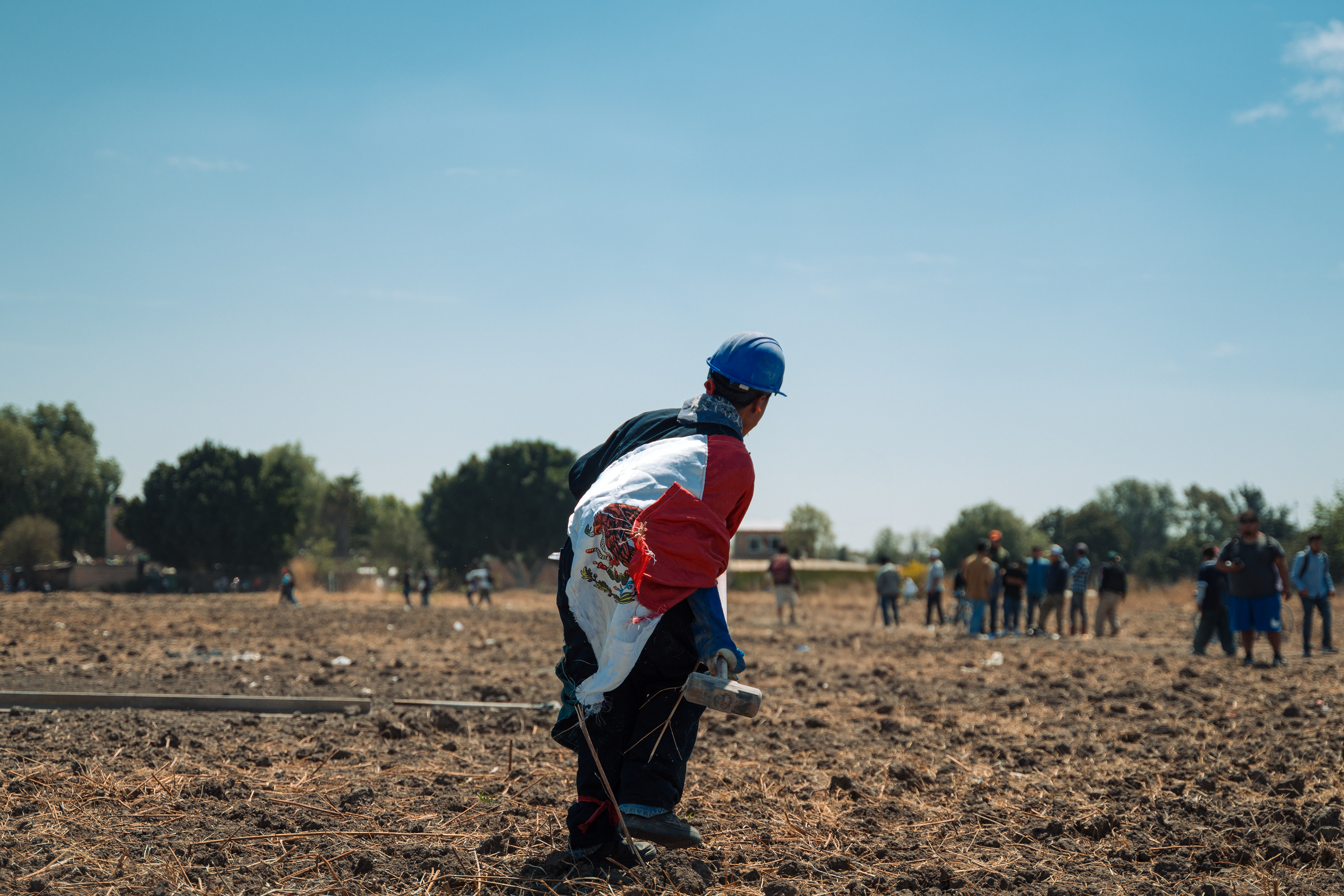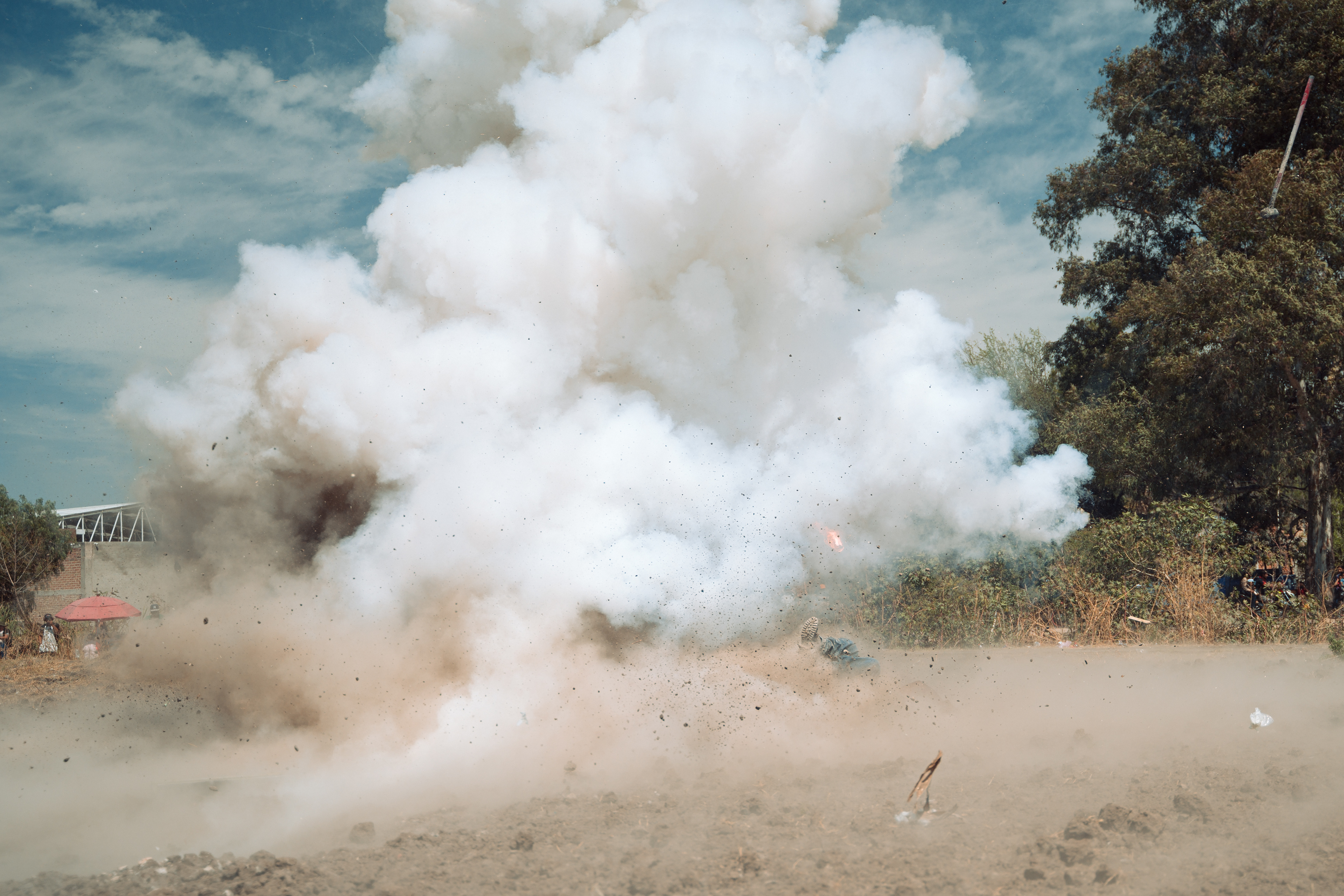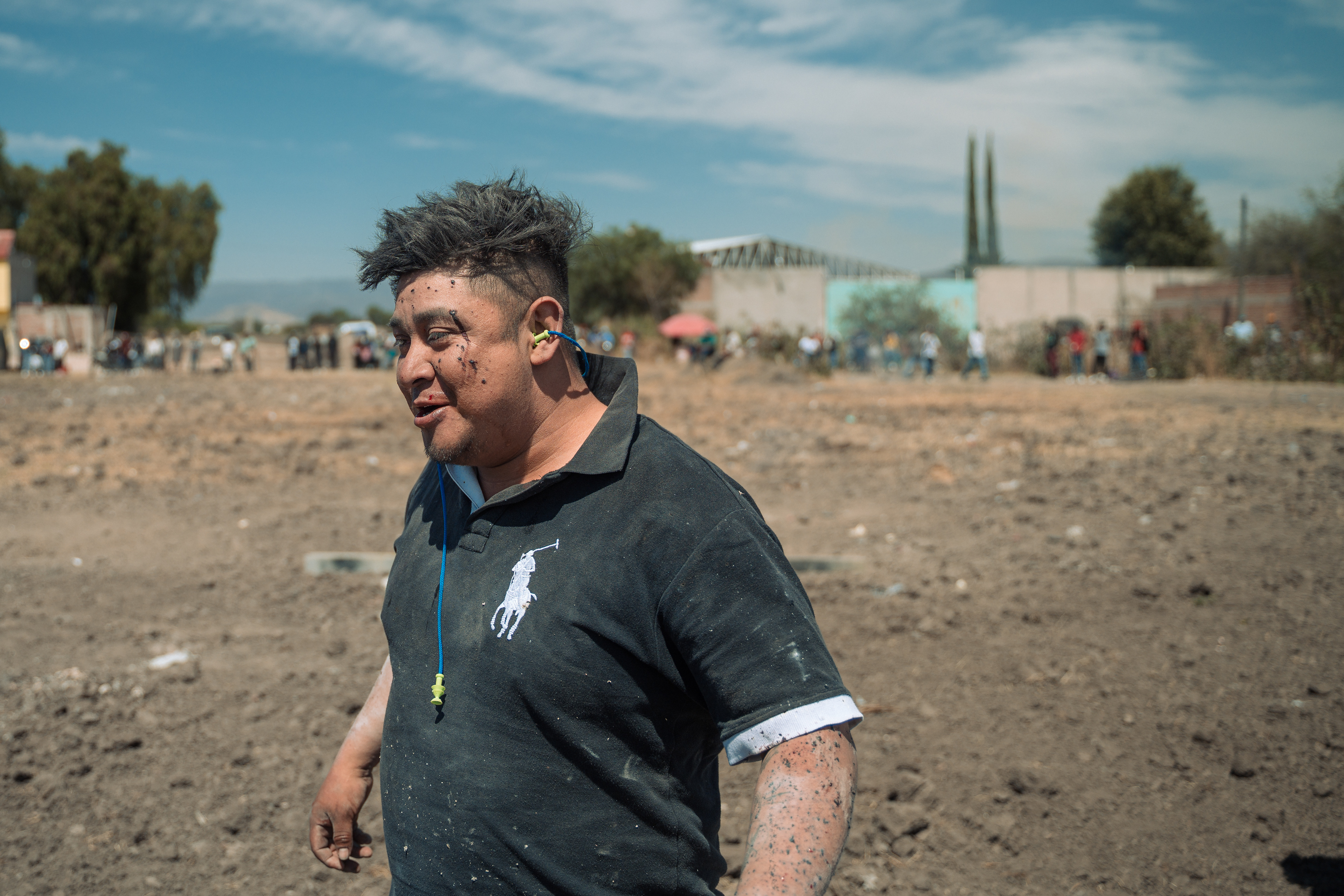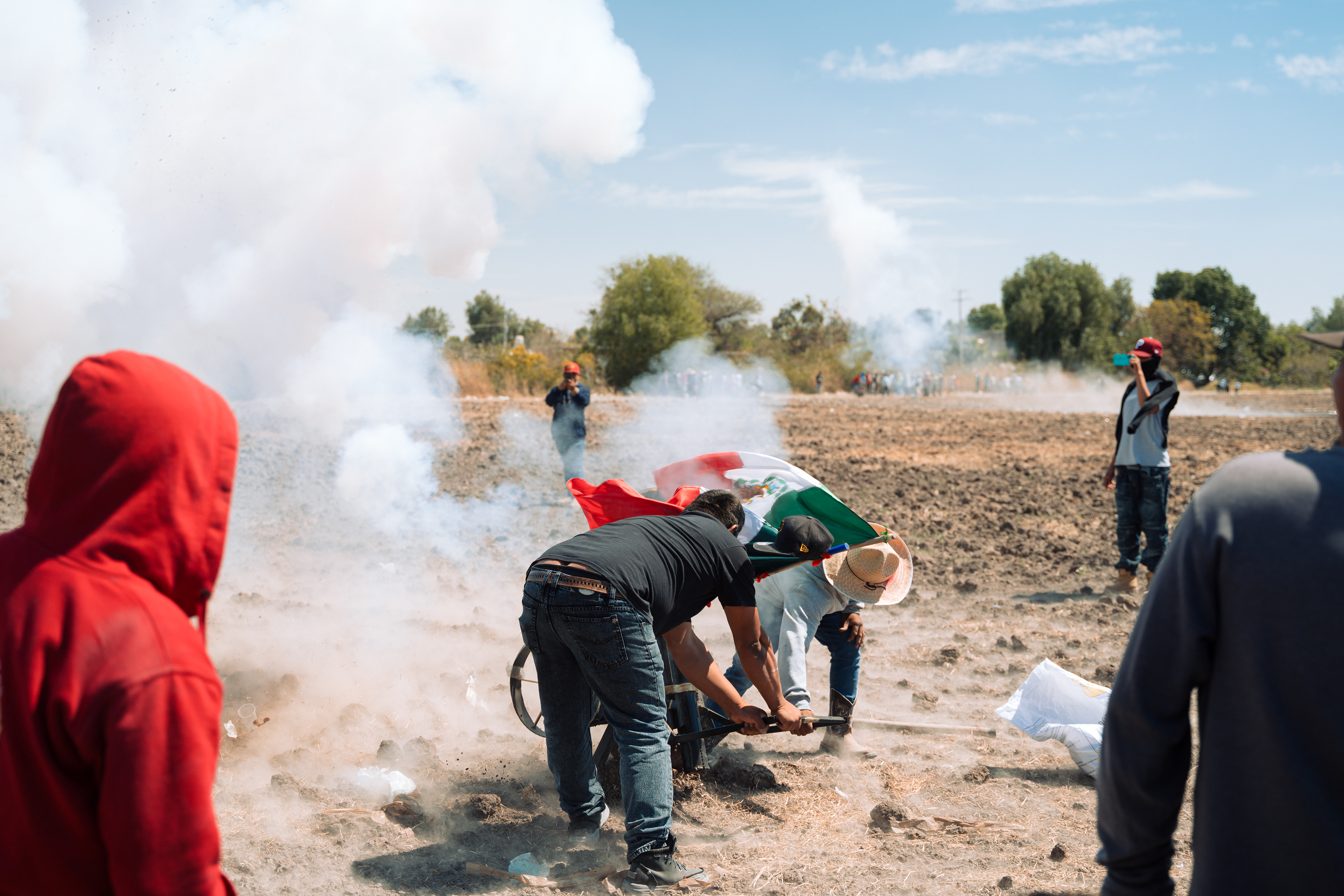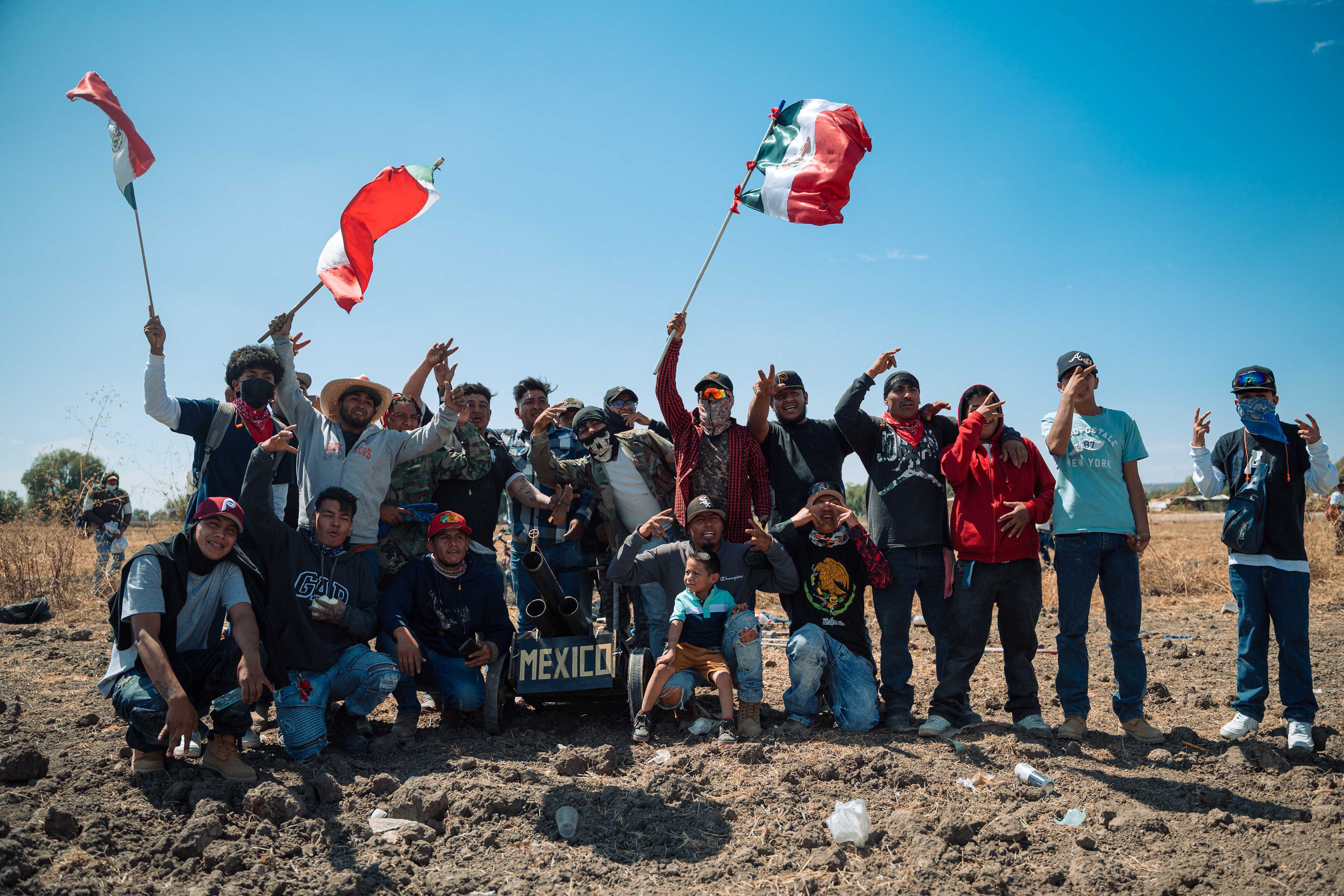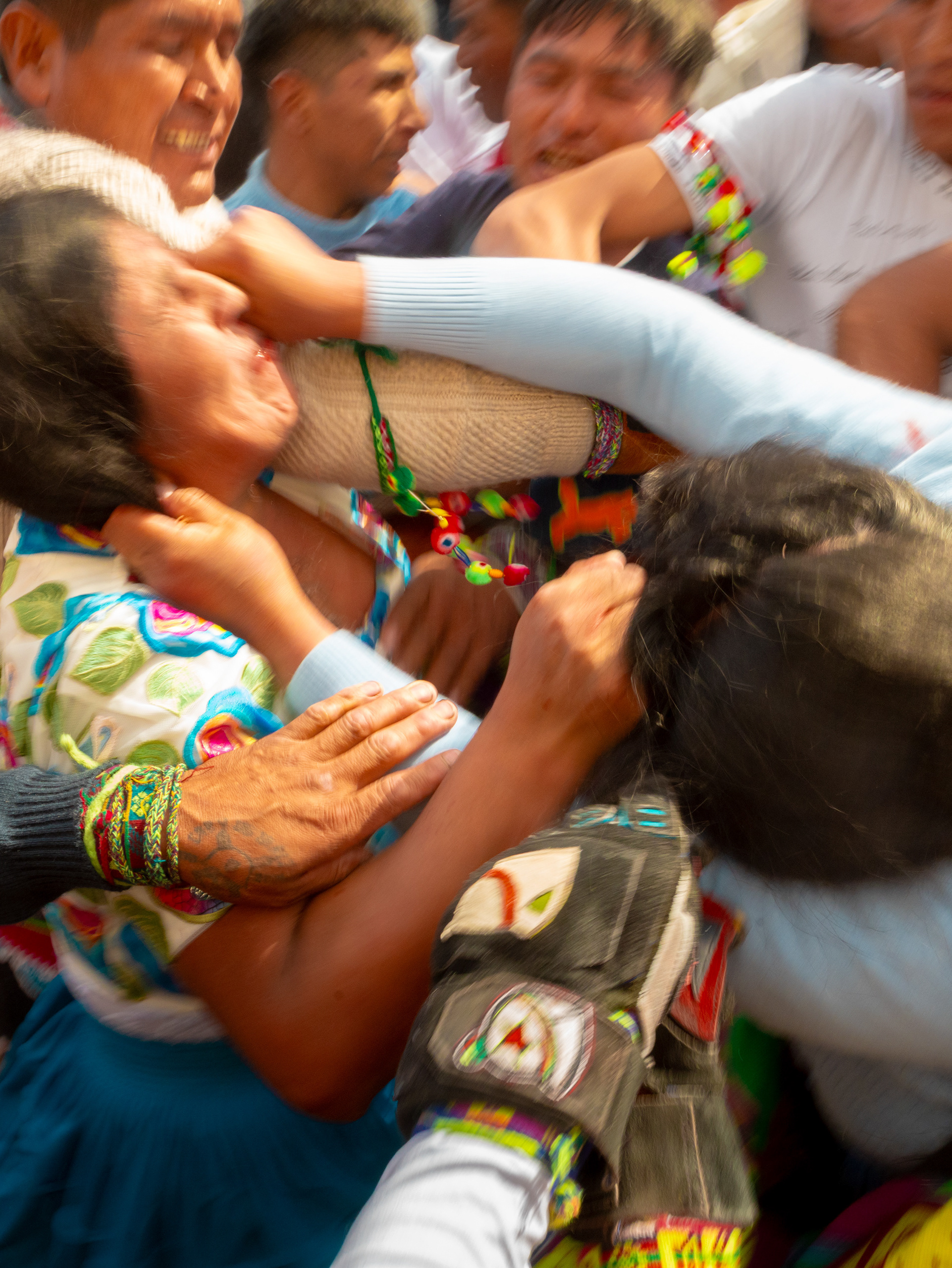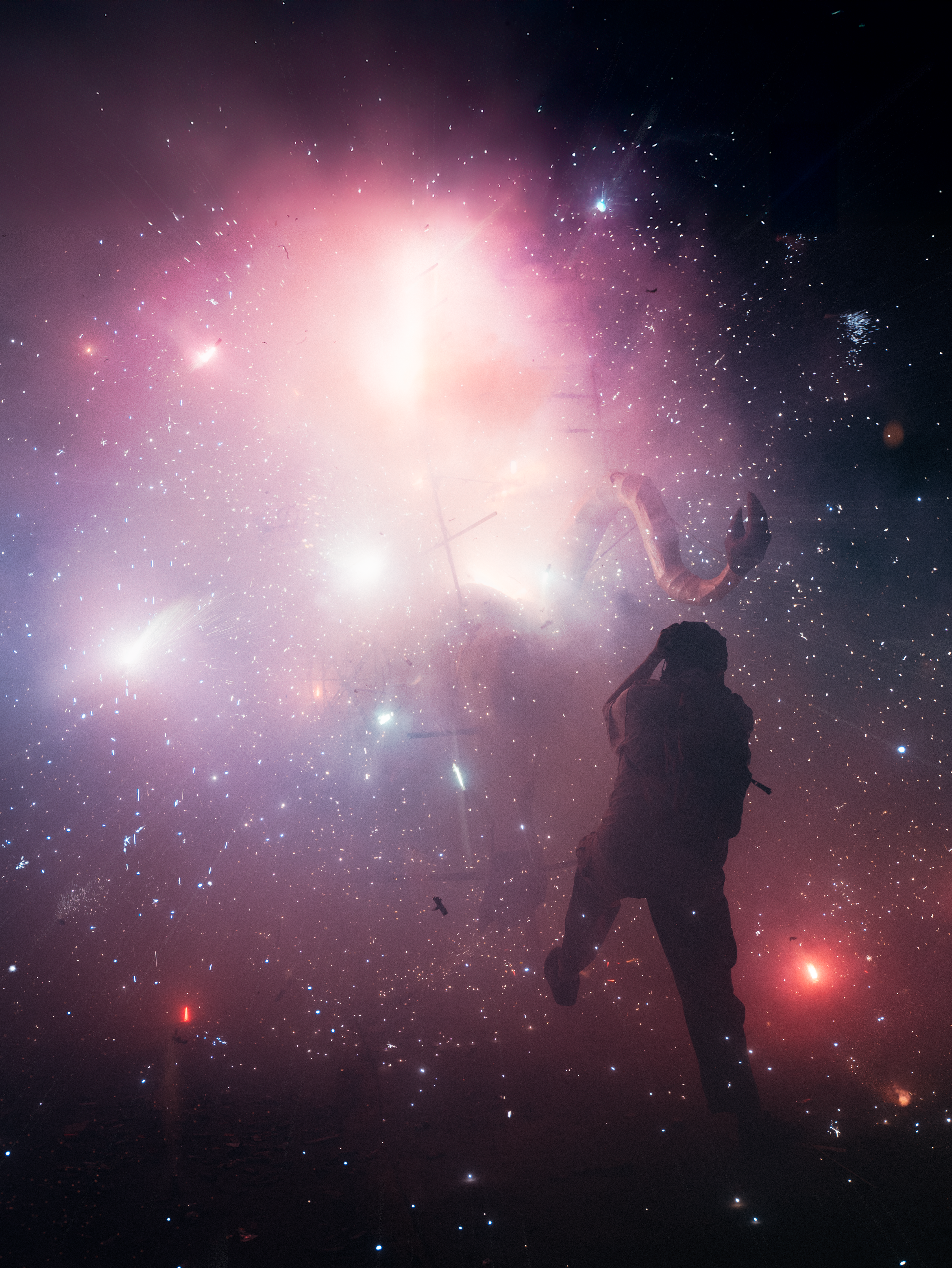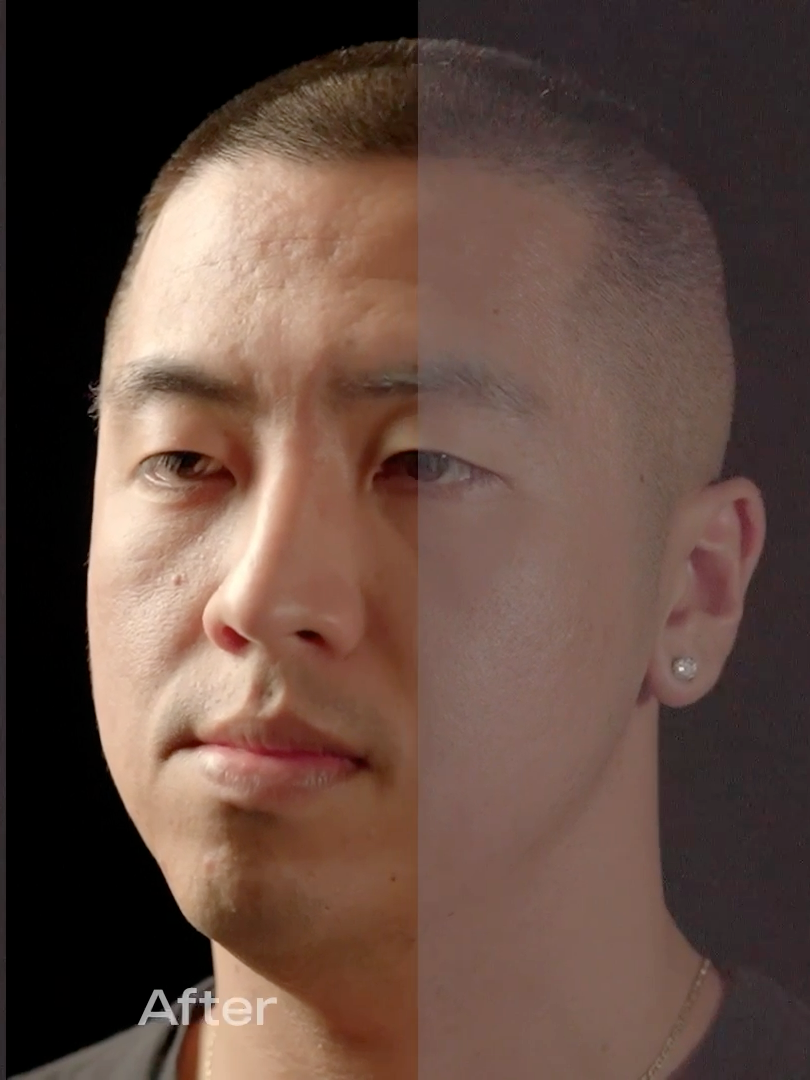Known locally as the " Los Martillos Explosivos", it takes place every year on Shrove Tuesday in the small town of San Juan de la Vega, in the Mexican state of Guanajuato. Its roots date back to 17th-century legends centered on Juan Aquino de la Vega, known as “San Juanito”: in some versions, he was a wealthy miner robbed by bandits; in others, a sort of local Robin Hood who stole gold from wealthier miners to share it with the poor. In both cases, tradition speaks of a vow made to honor the protective saint.
The most striking feature of the celebration is the use of large hammers—sometimes weighing up to 30 kg—fitted with homemade explosive charges made of potassium chlorate and sulfur. Participants strike metal plates or stones, causing powerful detonations: deafening booms, clouds of smoke, and the intense smell of sulfur envelop the entire town. This enactment recalls the battles between bandits and arrieros (mule drivers) following Aquino de la Vega, creating an atmosphere that hovers between faith, theatricality, and a strong sense of communal belonging.
Despite the authorities’ attempts to ban the practice since 2000 for safety reasons, the festival continues each year in a more or less clandestine form. In the 2025 edition—which I had the opportunity to document personally—the number of injured reached 58. However, these incidents do not seem to diminish the community’s enthusiasm, as they view the explosions as a ritual gesture capable of driving away evil and recalling the legendary figure of San Juanito.
“We’ve always done this, and we will continue to do it, fingers fly off, chunks of flesh fly off, we get burns. Still, we have to blast.” (a partecipant in Los truenos de San Juan, 2017)
